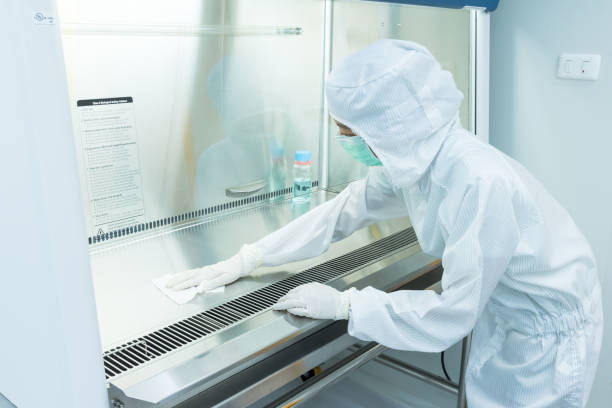Keeping spaces clean and safe isn’t just about appearances, it’s about protecting health, building trust, and creating an atmosphere where people can thrive. Whether it’s a home, workplace, or healthcare facility, hygiene plays a crucial role in our everyday lives. For hospitals in particular, maintaining a hygienic environment is not just a goal, it’s a necessity.
In this post, let’s explore why cleanliness is so vital, how different industries manage it, and why strong measures against pests are part of the bigger picture.
Why Hygiene Matters Everywhere
Think of your kitchen at home. If the counters aren’t wiped down or food scraps are left behind, it doesn’t take long before ants or cockroaches show up. Now, imagine the same problem in a restaurant or cafeteria, where dozens of people eat daily. The risks multiply.
Industries of all kinds from food service to childcare rely on high standards of hygiene to protect their communities. A well-maintained environment builds confidence. Parents sending their kids to daycare, customers dining out, or patients entering a clinic all expect one thing: safety.
One of the key reasons hygiene matters so much is its connection to public health. Germs and bacteria thrive in dirty environments, and pests often act as carriers, spreading them further. Understanding how these two issues intersect cleanliness and pest prevention is the first step to tackling them effectively.
Hospitals: Where Hygiene Cannot Be Compromised
Unlike most public spaces, hospitals deal with individuals who are already vulnerable—patients recovering from surgeries, people with weakened immune systems, or newborn babies. In such places, even a minor lapse in sanitation can have severe consequences.
Consider this example: a single mouse in a hospital kitchen could contaminate food supplies, leading to an outbreak of foodborne illness. Or a cockroach hiding in a patient ward could transfer bacteria to critical surfaces. These are not just inconveniences, they pose a threat to patient health and trust.
Hospitals are also complex environments with multiple high-risk zones:
- Operating theaters where sterility is paramount.
- Pharmacies and labs where contamination can alter medicines or samples.
- Patient rooms where cleanliness has a direct impact on recovery.
Maintaining hygiene here goes far beyond mopping floors. It requires carefully planned systems, regular inspections, and a proactive approach to preventing pest issues before they happen.
Learning from Everyday Industries
The good news is, hospitals don’t face this challenge alone. Many industries offer examples of how strict hygiene protocols can keep spaces safe.
- Hotels: Guests expect clean rooms, fresh linens, and spotless bathrooms. A single bad review about pests or poor cleanliness can damage a reputation. This pushes hotels to invest in regular inspections, laundry services, and pest prevention programs.
- Food Manufacturing: Factories producing packaged goods often follow what’s called “Good Manufacturing Practice,” which includes scheduled cleanups, equipment sterilization, and pest-proofing facilities. These methods help ensure the end products are safe for consumers.
- Airports: With thousands of travelers moving through daily, airports adopt rigorous cleaning schedules and waste management systems. Otherwise, pests like rodents could thrive in such densely populated areas.
Hospitals, by nature, combine the complexities of all these industries. They host people overnight, like hotels, handle sensitive materials, like factories, and experience constant traffic, like airports. This is why their hygiene and pest management plans must be particularly robust.
The Role of Professional Pest Solutions
Cleanliness and pest control go hand in hand. Even the most spotless environment can attract pests if preventive measures aren’t in place. For healthcare facilities, working with professionals ensures a higher standard of protection.
One effective approach is tailored programs that focus on Pest Control for Hospitals. These solutions go beyond simply setting traps; they involve thorough inspections, monitoring, and treatment plans designed to protect both staff and patients. In the middle of a busy hospital environment, having reliable experts step in to prevent or resolve pest problems means peace of mind for everyone involved. You can learn more about this approach through trusted services like Pest Control for Hospitals.
By integrating pest prevention into overall hygiene practices, hospitals can reduce risks, save costs associated with potential contamination, and maintain their reputation as a place of healing.
Building Trust Through Hygiene
At the end of the day, maintaining a safe and hygienic environment isn’t just about rules and regulations—it’s about people. Families put their faith in hospitals to care for loved ones. Staff members expect a clean workplace. Patients hope for a recovery environment that feels safe and secure.
Strong cleaning protocols, pest prevention, and a culture of care all contribute to this trust. And it doesn’t stop at hospitals—these lessons apply to schools, restaurants, offices, and even our own homes.
Just as history has shown us through advances in public health, communities thrive when cleanliness is prioritized. Every industry can learn from the hospital standard: prevention is better than cure.
Final Thoughts
Creating a safe and hygienic environment is an ongoing effort, not a one-time task. For hospitals, it’s about protecting the most vulnerable. For businesses, it’s about preserving trust. And for homes, it’s about keeping families healthy.
By learning from everyday practices, investing in professional help when needed, and staying vigilant against hidden risks, we can all contribute to building cleaner, safer spaces. After all, a healthy environment benefits not just the people inside but the community around it as well.


